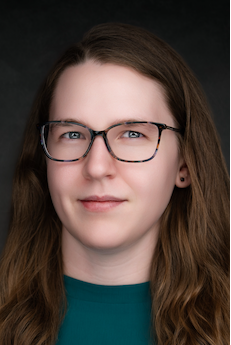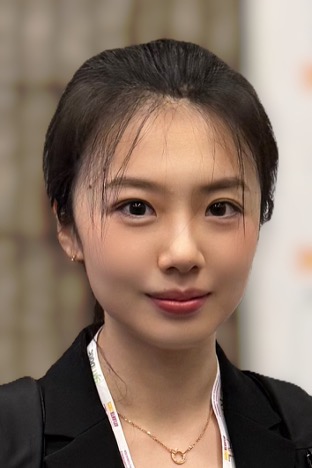Fresh Faculty Voices

Laura Stegner
Assistant Professor of Mechanical and Aerospace Engineering
Motivated by global challenges posed by increasing caregiver shortages, Dr. Laura Stegner seeks to design, build, and evaluate intelligent systems (e.g., robots) that support complex tasks in healthcare environments. Her dissertation investigates the specific use case of integrating care robots into assisted living facilities, although her interest lies broadly in any healthcare domain. Dr. Stegner’s work makes scientific contributions to new methods, tools, systems, and knowledge, while she also engages the local community in bringing robots into the real world.
- What excites you most about joining the faculty at GW Engineering, and how do you see your work contributing to the growth of the school, your department, and its students?
I am excited to join such an interdisciplinary and collaborative environment! My focus on robots and artificial intelligence for healthcare applications will complement the existing research in autonomous systems with the MAE Department, while also introducing a new emphasis on healthcare, service robotics, and user-centered design.
- How would you describe your teaching style, and what do you hope to inspire in your students through your classes?
I am still new to teaching, so my style will develop over time. I am looking forward to teaching because I believe that I can make a meaningful impact by helping students become well-rounded, curious problem solvers who are prepared to tackle real-world challenges.
- What made you choose GW Engineering as the next step in your career?
I chose GW Engineering because of its unique culture of interdisciplinary collaboration, which aligns perfectly with my research interests. I am excited to work with outstanding faculty within MAE and GW Engineering, as well as colleagues across the medical, nursing, and law programs.

Aya Zirikly
Assistant Professor of Computer Science
Dr. Aya Zirikly joins GW Engineering as an assistant professor, having previously served as a research scientist at Johns Hopkins University. Her research focuses on applied Natural Language Processing (NLP) in health informatics, mental health, social media, and social-good applications. She is particularly recognized for developing artificial intelligence and NLP models that analyze text data to predict and identify mental health conditions. Her work has been influential in creating tools for early detection and intervention in depression and suicide risk, using innovative methods to analyze patient communications and social media. Recently, she has been working on utilizing large language models for patient triaging, enhancing the analysis of clinical narratives for more efficient and accurate prioritization of patient care.
Beyond her research, Dr. Zirikly is passionately committed to mentoring the next generation of engineers and computer scientists. She actively promotes broadening participation in STEM and encourages interdisciplinary work to address real-world challenges.
- What excites you most about joining the faculty at GW Engineering, and how do you see your work contributing to the growth of the school, your department, and its students?
GW Engineering holds a special place in my heart, as it is where I completed my Ph.D. I believe it’s particularly meaningful to give back to institutions that have greatly influenced your life. I am happy and proud of the growth of the Computer Science Department and GW Engineering has undergone in recent years. I’m especially excited to contribute my expertise in AI and applied NLP in health and mental health domains to address research questions relevant to our nation and the GW community. This aligns with GW Engineering initiatives like TRAILS, which focus on building evidence-based health AI and NLP tools, further establishing GW as a leader in these areas.
I am a strong advocate for interdisciplinary research and would love to collaborate with the School of Medicine and the School of Public Health at GW. Together, we can make a real impact by addressing urgent needs in behavioral health, healthcare accessibility, and childhood health.
- How would you describe your teaching style, and what do you hope to inspire in your students through your classes?
Teaching is a dynamic process, and I strongly believe in engaging students in shaping the curriculum and materials covered in class. I believe in listening to the students’ needs and building clear expectations on both sides to ensure a successful learning experience. I hope to inspire my students by showing them that, regardless of their background or circumstances, meaningful research grounded in our reality can drive change.
- What made you choose GW Engineering as the next step in your career?
Being part of GW Engineering before greatly influenced my decision to join GW and truly excited me. I am honored to join the amazing faculty members whom I now call colleagues, and who have inspired many students while advancing research in various aspects. I also love the community atmosphere at GW Engineering, where building connections and collaboration, rather than competition, is essential and part of its identity.

Junghun Cho
Assistant Professor of Biomedical Engineering
Dr. Junghun Cho comes to GW Engineering with a rich academic and research background, having earned degrees in Physics and Biomedical Engineering from the University of Michigan, University of Wisconsin, and Cornell University. He then completed postdoctoral training at Weill Cornell Medicine and received the prestigious NIH K99/R00 Career Development Award. Before joining GW, he was an Assistant Professor at SUNY Buffalo, where he received the “Rookie of the Year” faculty award in 2024.
Bridging imaging science and neuroscience, Dr. Cho’s research focus is on developing quantitative MRI methods to better understand brain function and neurological disorders. His innovative work on cerebral oxygen extraction has earned numerous accolades, including multiple awards from the International Society of Magnetic Resonance in Medicine.
- What excites you most about joining the faculty at GW Engineering, and how do you see your work contributing to the growth of the school, your department, and its students?
I am most excited about joining a vibrant and collaborative academic community at GW Engineering, where innovative research and interdisciplinary collaboration are strongly encouraged. My work in developing novel MRI techniques for quantifying cerebral oxygenation and applying them to neurological disorders aligns well with the school’s vision of translating engineering innovations into real-world impact. I see my research program contributing to the department’s growth by establishing a strong biomedical imaging focus, fostering collaboration with clinical partners in the Washington, D.C., area, and creating new opportunities for external funding and recognition that can elevate the school’s national profile.
- How would you describe your teaching style, and what do you hope to inspire in your students through your classes?
My teaching style emphasizes clarity, engagement, and application. I strive to break down complex concepts into accessible ideas while connecting them to real-world examples and ongoing research. I actively encourage questions, problem-solving, and collaborative learning to create an inclusive and supportive classroom environment. Through my classes, I hope to inspire students to think critically, approach problems from multiple perspectives, and gain the confidence to pursue their own innovative ideas. Ultimately, I want them to see the power of engineering as a tool for improving human health and society.
- What made you choose GW Engineering as the next step in your career?
I chose GW Engineering because of its strong commitment to interdisciplinary research, its central location in Washington, D.C., and the opportunity to collaborate with world-class clinicians and scientists. The department’s vision of bridging engineering with medicine and public health resonates deeply with my own goals of translating imaging innovations into clinical applications. I also value GW’s supportive culture for early-career faculty, which I believe provides the ideal environment to grow my lab, mentor students, and build impactful research collaborations.

Chuchu Chen
Assistant Professor of Mechanical and Aerospace Engineering
Dr. Chuchu Chen’s research focuses on state estimation and spatial perception for robotics and extended reality (XR), with the broader goal of advancing Physical artificial intelligence (AI) for embodied systems. Her work develops theoretical innovations in estimation theory, sensor calibration and fusion, multimodal perception, and 3D scene understanding, leading to algorithms that are consistent, efficient, and deployable in real time. These methods advance spatial intelligence and find cross-platform applications in drones, legged robots, autonomous vehicles, and immersive XR devices. At GW Engineering, she directs the Estimation, Perception, & Intelligent Computing (EPIC) Lab, which aims to build embodied systems that can navigate, understand, and interact intelligently in complex and dynamic real-world environments.
- What excites you most about joining the faculty at GW Engineering, and how do you see your work contributing to the growth of the school, your department, and its students?
I’m excited to join GW Engineering at a moment when robotics, AI, and XR are converging to shape the next frontier of technology. I believe that intelligent robots and smart devices will soon become part of our everyday lives, and my research at GW is about making that future a reality. By advancing state estimation, perception, and Physical AI, I aim to create systems that are not only scientifically rigorous and practically transformative, but also capable of helping people in meaningful ways—from making work safer to enhancing daily experiences. At GW, I look forward to collaborating across computer science, electrical and computer engineering, and biomedical engineering to build technologies that strengthen the school’s leadership in robotics and AI and generate lasting impact on society.
- How would you describe your teaching style, and what do you hope to inspire in your students through your classes?
My teaching style is hands-on and inquiry-driven. I want students to not only understand core principles but also build, test, and push the boundaries of what’s possible. I especially enjoy seeing them deconstruct—and sometimes even break—both robots and algorithms, then rebuild them in smarter, more creative ways. Those cycles of trial and reinvention are where the deepest learning happens. I hope to inspire curiosity, rigor, and resilience, so students leave class confident in both their technical skills and their ability to tackle new challenges.
- What made you choose GW Engineering as the next step in your career?
I chose GW Engineering because of its ambitious vision for growth in robotics and AI, its collaborative community, and its commitment to bridging fundamental research with real-world applications. The opportunity to build my lab here, collaborate with outstanding colleagues, and mentor the next generation of engineers makes GW Engineering the ideal place to launch my faculty career.

